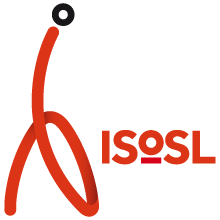


Location
Belgium

Activity area
Healthcare
Company Overview
Liège’s Intermunicipal Center for Specialty Care (Intercommunale de soins spécialisés de Liège, ISoSL) was founded in 2008 after the merger of various local healthcare institutions. It operates several facilities that specialize in psychiatry, geriatrics and psychogeriatrics, and nursing homes for the elderly in the region of Liège.
- Location: Belgium
- Industry: Healthcare
Having the cross-organization visibility into activities and the ability to connect projects to strategy empowers us to help executive leaders steer the overall business strategy.
CHRISTOPHE LEJEUNE
PMO
Initiative Overview
Since its inception, ISoSL’s IT PMO has been working to implement a formal project management process. The goal was to consolidate data and to get a comprehensive overview of all projects in order to improve tracking of projects’ progress and quality.
After introducing the basics of project management to team members, Christophe Lejeune, the PMO Manager spearheading the initiative, decided to take things to the next level by providing users with a PPM tool to apply their new skills and enable project management at a portfolio level.
Because ISoSL’s many facilities and divisions work independently from each other, ensuring cross-functional communication in the company is the responsibility of central support functions like IT. For this reason, the IT PMO needs a good overview of activities across the organization and is well positioned to play a central role in coordinating and managing not only IT, but also strategic projects.
Business Drivers and Requirements
Gaining Better Visibility on Resources
ISoSL needed a centralized repository providing an up-to-date overview of IT resource utilization. This enhanced visibility was needed to improve capacity planning, to optimize project management at a portfolio level, and to prevent projects from being delayed indefinitely.
Facilitating Better Prioritization and Project Selection Decisions
Another purpose of increased resource visibility was to improve the project demand/intake process and project selection. Any demand that makes enough sense to evolve into a business case is submitted to the approval of a biannual strategic IT committee, created by the PMO team. This steering committee needed reliable data – whether projections or actuals – to perform trade-offs and prioritize projects against resource availability.
Improving Budget Management and Planning
Projects don’t only require human resources, but also funding. As the PMO’s role was becoming more and more strategic, it was increasingly important to consider the cost of each project task in order to factor in financial matters when selecting and scheduling projects.
Sciforma Solution
Software Critical Capabilities
- Capacity management
- Project planning/scheduling
- PPM reporting/dashboards
- Program/portfolio management
- Simulation of scenarios to see the impact of decisions on resource availability and portfolio consistency
Technical Choices
“After about two years working on Sciforma, we wanted to limit configuration as much as possible, since we noticed that every specific development we considered doing was integrated into the tool shortly after.” Christophe Lejeune, PMO Manager, ISoSL
Services
- Admin and user training
- Implementation and integration services
Realized Benefits & Next Steps
A Dramatic Reduction in Project Cycle Time
Improved visibility, better demand management, and overall project tracking processes have accelerated project completion. Before Sciforma, projects sometimes remained unfinished for a long time, without anyone seeing a point in completing them. Now with Sciforma, every project is followed through and completed.
Additionally, the organization has stepped up its project activities. When Christophe Lejeune joined ISoSL, the company only managed a handful of projects. Now, the PMO juggles 22 simultaneous projects at a time, while achieving greater performance against deadlines and financial goals.
Instilling a PPM Culture
After consolidating all the projects into Sciforma, the PMO enforced a policy whereby a project is managed by its initiator, or by a project manager from the same department. Accordingly, new populations (nurses, architects, etc.) had to be trained to manage projects and to use Sciforma. Successful adoption was achieved thanks to targeted, custom-made and self-paced training sessions, supported by positive reinforcement to recognize best practices. This also helped spread a project management culture across the company.
An Increasingly Strategic PMO
Providing reliable and relevant data to decision-makers has improved demand management and project selection to align with strategic business goals.
Achieving great performance in IT project management and great user satisfaction, the IT PMO is the creator of its own success: Christophe Lejeune and his team are increasingly asked to work on projects reaching beyond the realm of IT. So much so that the IT PMO was eventually promoted to strategic PMO. Reporting directly to executive management, the empowered strategic PMO now manages projects of all kinds.






